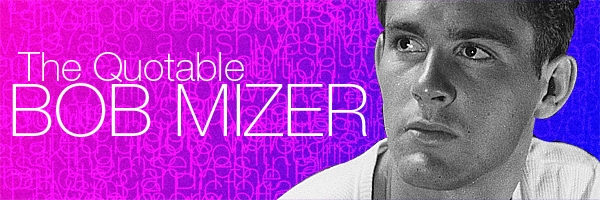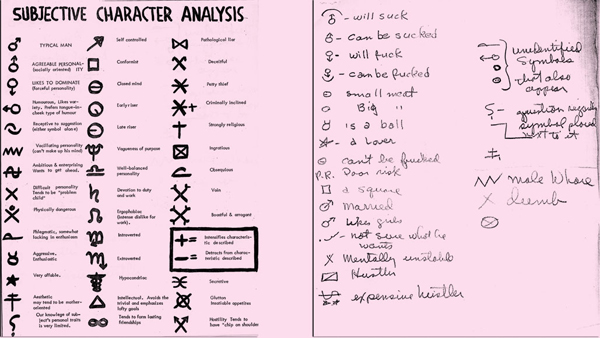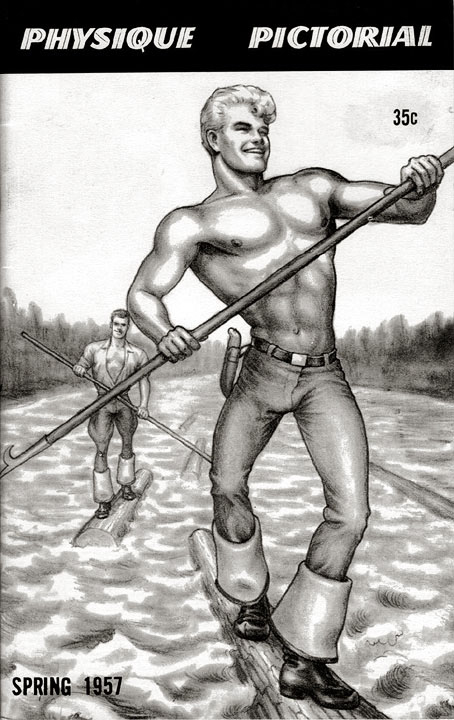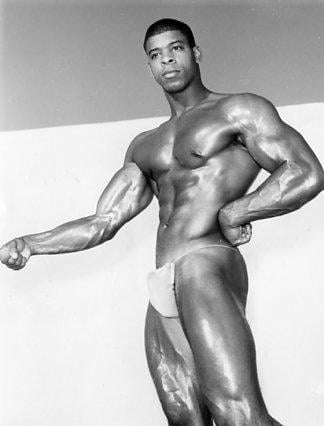Character analysis revealed the core of Mizer's models
To the uninitiated, the symbols may as well have well been Egyptian hieroglyphics – clusters of arrows, circles, squares, squiggly lines, and...
3 min read
Bob Mizer Foundation : Dec 9, 2015 2:05:00 PM

True followers of Bob Mizer’s “Physique Pictorial” know that the publication was more than just a menagerie of pretty faces and toned bodies – it was a place where the artist could offer his insight into the social and political issues of the world in which he lived.
Throughout its 40-year run, “Physique Pictorial” heavily featured editorials by Mizer on issues about which he felt strongly – none of those issues were as prominent as the topic of censorship. For Mizer, it wasn’t just a very real threat; it was a reality – in 1954, less than a decade after his founding of the Athletic Model Guild and only three years after the launch of "Physique Pictorial," Mizer was charged with "selling, keeping for sale, exhibiting and distributing an obscene and indecent print, picture or photograph."
By today’s standards, the series of images of bodybuilders adorned with posing straps are harmless. In Mizer’s era, however, the reality of legal action or a prison sentence for such an infraction loomed, threatening to irreversibly harm his very livelihood.
Instead of harming his career, however, Mizer emerged from the experience seemingly strengthened and empowered, and from the early days of “Physique Pictorial," the magazine served as a sounding board for Mizer’s thoughts on everything from health to homosexuality.
“What many don’t realize about Bob Mizer is, in addition to being a gifted photographer with an artistic eye, he also was an eloquent writer,” says Dennis Bell, founder and president of The Bob Mizer Foundation. “He was a very opinionated man, and when he wrote about an issue he deemed important, readers not only listened – they responded, too.”
The topics of Mizer’s editorials were as diverse and varied as the models who appeared above them in the layouts of “Physique Pictorial.” Although the early issues of “Physique Pictorial” were light on opinion writing, editorials began to appear with more frequency at the dawn of the 1960s, growing longer and more impassioned as the publication’s audience grew:
On the renaissance of physique culture (spring 1955): “Oftentimes, a person just picks up these magazines out of curiosity, and perhaps out of an objective curiosity for physical perfection. But suddenly, as he reads the success stories of others, he realizes that he, too, can and should improve his own body, and make it a more beautiful temple for a noble spirit. Let us hope that this and future years will see physique culture flourish all the more, and that those who tend now to be critical of us may themselves be willing to expose themselves to exercise and healthful living and will thereby gain a new conception of the importance of the physique.”
On capital punishment (summer 1955): “Capital punishment is the fate only of poor men since rich men are invariably able to avoid the death penalty. In fact, only 1 out of every 100 murders ever pays the death penalty. Yet members of poor, racial minority groups are 5 times as likely to be executed as are members of majority groups who can claim more public sentiment. Most crimes of violence are committed in blind rages or under mental conditions which shut out the thought of any penalty. Wealthy calculating criminals are not restrained, for they know that under the present system with sufficient legal help, they can save themselves. Only the poor and friendless man … ends up in the execution chamber.” (Years later, in the spring 1960 issue, Mizer would write that he and several of his models, after continuing to speak out against capital punishment following the Chessman case, were labeled by mainstream media outlets such as The Los Angeles Times as “softheaded,” “pseudo-liberals” and “criminal lovers.” Readers throughout the rest of that year, in letters submitted to Mizer, questioned, “whether a physique magazine is the proper place to discuss capital punishment.)
On homosexuality (summer 1960): “To be sure, if a boy is labeled a ‘sissy,’ and treated like a girl, he may make an adjustment to this role all of the way, accepting the female role in sex as a matter of course. On the other hand, homosexuality was the standard way of life among the rugged Greek warriors, and according to researchers of our own, current time is no rarity among such masculine occupations as truck drivers, cowboys, military men, policemen, and many others. Bodybuilding, and the creation of a rugged, will almost always remove the stigma of ‘sissy’ from a young man, because big muscles and femininity are incongruous.
On the power of protest (summer 1962): “We really believe that protest is essential. To bury one’s head and pretend that there are no forces trying to suppress physical cultural expression is to fail to meet the issue head on. We also … don’t feel we can ignore the negative. … Whole countries have fallen because the people failed to believe anything bad could happen to them. Jews were herded like cattle into the gas chambers, many of them believing that protest was futile.” (Mizer’s comments were published in response to a reader who complained that “Physique Pictorial” focused on negative elements in society and not enough on positive stories.)
On censorship and changing laws (summer 1971): “The motivations of those who wish to suppress material that they find offensive is to bring about what they believe to be a more beautiful life devoid of elements destructive to social progress. … While there are some levels of legislation which would require considerable debate, there should be no question that almost all ‘victimless crimes’ must be stricken from the books.
On the government’s misguided priorities (summer 1973): “Government has no business in the field of private morals – rather, it should concentrate on such truly moral principles as respect for life (instead of bombing innocent thousands). … You will find that those who most vehemently defend and excuse the actions of the culprits of Watergate are the most antagonistic against freedom of personal morals. As of this writing, 1984 is 11 years away – but Big Brother is gearing up now.”
This blog, as well as our monthly newsletter, features quotes from Mizer about his life, times and opinions. Click here to subscribe to The Foundation's newsletter.

To the uninitiated, the symbols may as well have well been Egyptian hieroglyphics – clusters of arrows, circles, squares, squiggly lines, and...

The editors of most magazines welcome letters to the editor, allowing readers to praise, question or criticize editorial decisions made by the...

Since we’re on a bit of a fashion kick this week, we thought we’d draw attention to some rather fashionable drawers – underwear, that is. When AMG...

Author’s note: This is the second part of a four-part series designed to introduce the novice to photographer and filmmaker Bob Mizer. We will post a...